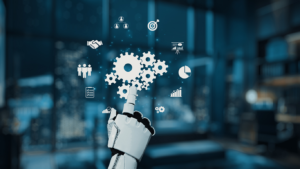T-Mobile has found itself in the news quite a bit lately. Over the past several quarters, the mobile service provider has ramped up efforts to encourage customers bound to contracts with competitors (AT&T, Sprint and Verizon) to switch over to T-Mobile by promoting a no-contracts business plan — something that is assuredly shaking up the industry.
In addition to offering contract-free mobile service, what else has T-Mobile been promising? To start, T-Mobile announced the JUMP! plan late last summer, which allows customers to upgrade their cell phones (including the iPhone and Samsung Galaxy) without waiting the typical two-year gap that other service providers require. For an extra $10 per month (which includes comprehensive phone insurance), JUMP! customers can trade in their phone for the newer iteration every six months. Without something like the JUMP! plan, it’s not unusual for a cell phone customer to skip a generation of their cell phone while waiting to become eligible for an upgrade.
In early 2014, T-Mobile announced that they promise to pay off new customers’ early termination fees charged by rivals AT&T, Sprint and Verizon. T-Mobile CEO John Legere called these early termination fees (ETFs) part of a “scam” and denounced the lack of transparency demonstrated by other cell phone service companies. Though T-Mobile’s promise could cost as much as $650 per line, the cell phone service provider has promised to eat the costs levied by their competitors.
Another enticing feature of T-Mobile is the massive rollout of its LTE network. Legere believes T-Mobile to be the fastest nationwide LTE network with faster average download speeds than Verizon, AT&T and Sprint networks.
These offers clearly worked: T-Mobile saw a boost in new cell phone service subscribers in late 2013/early 2014. They also earned high customer satisfaction marks in a J.D. Power survey, taking third place among the big carriers and being named the most improved.
Last month, while reports circulated that T-Mobile had yanked BlackBerry devices off of their store shelves, the company sent their current BlackBerry users an email blast containing a great offer. T-Mobile asked BlackBerry customers to upgrade not to BlackBerry handsets, but to the iPhone 5S for no money down.
In response to T-Mobile’s brazen move, BlackBerry customers contacted T-Mobile directly to express their disappointment, even Tweeting at T-Mobile’s CEO John Legere.
BlackBerry CEO John Chen crafted a blog post thanking BlackBerry customers who defended the phone maker and praising their loyalty. He also expressed confusion with “the behavior of our longtime business partner” and promised loyal customers on the T-Mobile network “an offer in the works designed especially for you.”
T-Mobile CEO John Legere acknowledged the feedback from BlackBerry fans and came back with a counter offer. He allowed BlackBerry customers to trade in old BlackBerry devices for new T-Mobile BlackBerry devices at a discounted price — or in some cases, for free.
BlackBerry users on T-Mobile who want to upgrade can receive $250 toward any BlackBerry phone, or $200 toward any other phone in T-Mobile’s stores. This was considered to be T-Mobile’s way of apologizing for the mix-up and the resulting backlash.
Even though T-Mobile tried to make it right with BlackBerry and with their customers, scores of customers decided they wanted another type of device instead of a BlackBerry. T-Mobile offers a myriad of BlackBerry devices such as the Q10, Curve and Z10, but the majority of customers opted for other devices on different platforms.
Some reports say that T-Mobile’s offer garnered 15 times the normal amount of BlackBerry trade-ins; however, 94 percent of those customers chose to upgrade to a non-BlackBerry device.




